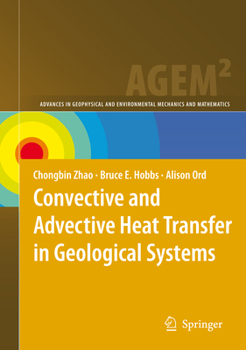Convective and Advective Heat Transfer in Geological Systems
Select Format
Select Condition 
Book Overview
The study of heat transfer mechanisms in hydrothermal systems is important for understanding the basic physics behind orebody formation and mineralization in the upper crust (Bickle and Mckenzie 1987; Bjorlykke et al. 1988; Brady 1988; England and Thompson 1989; Hoisch 1991; Connolly 1997). Generally, heat energy may be transferred within the crust in the following forms: conduction, advection (including forced convection) where the heat is carried by a moving mass of rock during def- mation or by a moving uid, convection (i. e., free convection, natural convection, buoyancy driven convection, temperature gradient driven convection) and a com- nation of these processes. Since advective ow is usually generated by a pore- uid pressure gradient, heat transfer due to advective ow is largely dependent on the pore- uid pressure gradient distribution in hydrothermal systems. A typical ex- ple of this advective ow is the upward through ow caused by lithostatic pore- uid pressure gradients within the lower crust. Extensive studies (Connolly and Ko 1995; Etheridge et al. 1983; England et al. 1987; Fyfe et al. 1978; Walther and Orville 1982; Peacock 1989; Yardley and Bottrell 1992; Hanson 1992; Yardley and Lloyd 1995; Norton and Knapp 1970) have shown that lithostatic pore- uid pressure can be built up by metamorphic uids arising from devolatilization and dehydration - actions, if the permeability is low enough to control uid ow in the lower crust.
Format:Paperback
Language:English
ISBN:3642098436
ISBN13:9783642098437
Release Date:November 2010
Publisher:Springer
Length:230 Pages
Customer Reviews
0 rating





